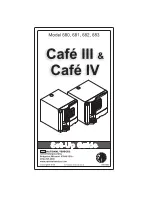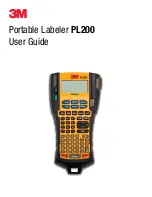
SnoWizard, Inc. * 101 River Road * New Orleans, LA 70121 * 1-800-366-9766 * www.SnoWizard.com
Cutter has been neglected and shows severe mineral
deposit buildup. Regular cleaning and maintenance
would have prevented this.
This blade has cracked as a result of
calcium deposits which formed on the
underside. Water trapped between
the blade and the cutter caused a
catalytic reaction to occur. Calcium
crystals formed and pushed up
against the blade, cracking it at its
weakest point; the screw slot.
Remove the blades with a No. 2 Philips
head screw driver.
Next, remove the blade screws and all of the blades from
the cutter and set them aside. Then remove the 6 screws
that hold the fins in place and set the screws and fins
aside. Look at the cutter and cylinder for any mineral
deposit buildup. If there is any, clean these parts in the
same manner that the cabinet was cleaned.
Make certain
to remove all buildup from the flat surfaces where the
blades fit.
This is critical!
If mineral deposits are left on
these surfaces, calcium crystals will form underneath the
blades. Since the blades are held firmly in place with
screws, the crystals will push up against the blades
cracking them at their weakest point - the blade slots.
At the start of each season, we have several customers who
bring their cracked blades in wondering what happened.
After an examination of the backside of their blades we saw
that they were coated with calcium deposits. What
happened? They simply turned off their machine at the end
of the season without performing any end of year
maintenance. The water trapped between the blades and
the cutter formed calcium deposits and when the deposits
formed crystals, which grew
– they cracked the blades. Then
at the beginning of the next season when they went to
remove the blades to put in a fresh set, they found that their
blades had cracked. So it is very important to remove any
calcium deposit buildup from the blade slots.
Now let
’s go back to the cutter.
Once the cutter has been cleaned of mineral deposits,
thoroughly wash it with soapy water and then rinse it in very hot water
.
Let the water
run over the cutter until it heats up the metal. Dry the cutter off well with a towel. As best
as possible, blow through the screw holes to remove any water. Set the cutter down and
let it rest for a while so that all water can evaporate from the screw holes.
Cutter has been cleaned regularly and is well maintained.























